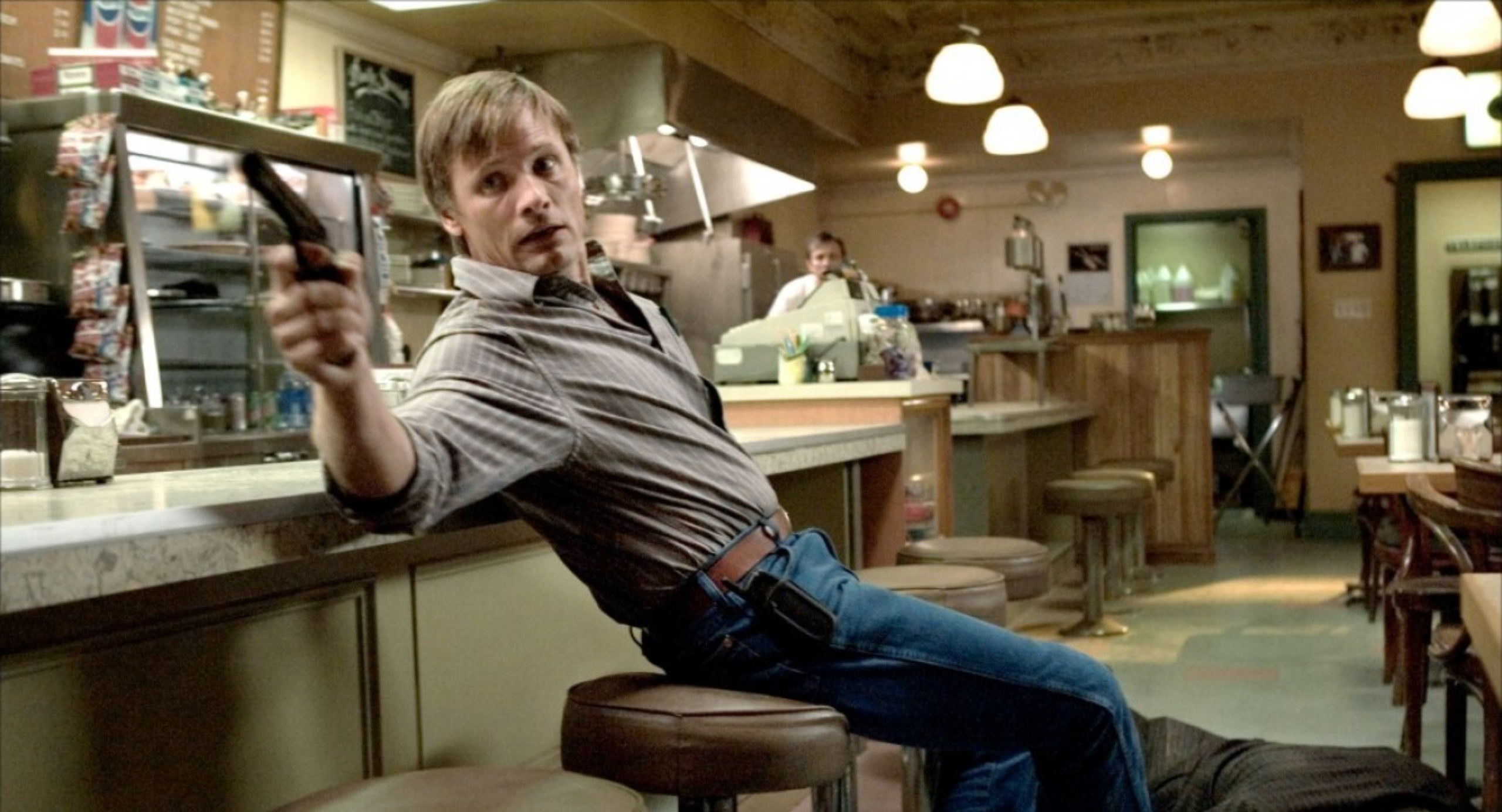A History of Violence – Film Review
Published March 10, 2024

A History of Violence, released in 2005, stands out as a compelling cinematic exploration of the duality of human nature and the omnipresence of violence within and around us. Directed by the legendary David Cronenberg, this film weaves a tale that, on the surface, appears to unravel a simple story of a small-town man confronting his dark past. However, upon deeper inspection, it reveals itself to be a sophisticated narrative about identity, morality, and the possibility (or impossibility) of redemption. With its adept storytelling, stellar performances, and meticulous direction, A History of Violence is a riveting film, albeit not without its flaws. This review endeavors to delve into the intricate layers of the film, applauding its triumphs while also acknowledging areas that fell short.
The film centers around Tom Stall (played with an astute mix of subtlety and intensity by Viggo Mortensen), a seemingly ordinary diner owner in the small town of Millbrook, Indiana. Tom lives a peaceful life with his wife, Edie (Maria Bello, delivering a performance both powerful and poignant), and their two children. This serene existence is shattered when Tom heroically thwarts a robbery at his diner, killing the two would-be robbers in self-defense. His actions catapult him into the national spotlight, but also draw unwelcome attention from menacing figures from Philadelphia, led by the scarred and sinister Carl Fogarty (a chilling Ed Harris), who claims Tom is not who he appears to be.
One of the film’s most remarkable feats is its portrayal of violence—not just as a physical act, but as a thematic undercurrent influencing every character and their interactions. Cronenberg, known for not shying away from the visceral and graphic, utilizes violence to catalyze character development and plot progression. Unlike the gratuitous gore seen in some of his other works, the violence in this film feels almost uncomfortably realistic, serving a narrative purpose by exposing the primal instincts lying dormant within the most civilized facades.
Mortensen’s performance as Tom Stall is the keystone of the film. He masterfully navigates the duality of his character, portraying both the affable family man and the skilled killer with equal believability. His transformation raises profound questions about the nature of identity—is it something inherent or constructed? Can one truly escape their past, or are we eternally bound to it? Maria Bello, as Edie, delivers an equally nuanced performance. Her emotional journey—from a loving wife shaken by the revelation of her husband’s capacity for violence to a woman grappling with the duality of the man she loves—is portrayed with a raw honesty that resonates deeply.
While the principal cast delivers performances of exceptional caliber, the film’s supporting characters, notably Ed Harris’s Carl Fogarty and William Hurt in a brief but memorable role as Richie Cusack, add layers of complexity to the narrative. They serve not merely as antagonists but as mirrors reflecting Tom’s internal struggle, embodying the haunting persistence of a past refused to be buried.
However, A History of Violence is not without its imperfections. The film occasionally suffers from pacing issues, particularly in the second act, where the narrative seems to tread water before surging forward to its climactic resolution. Furthermore, while Cronenberg’s decision to leave certain aspects of Tom’s backstory ambiguous enriches the film’s thematic exploration of identity and change, it may leave some viewers craving more concrete explanations.
A significant achievement of the film is its ability to challenge the audience’s perceptions of violence. Rather than offering a simplistic condemnation or glorification, it presents violence as a multifaceted phenomenon—capable of both destruction and salvation. The film’s climactic scenes, intense not only in their physical confrontation but in their emotional revelations, encapsulate this dichotomy, leaving viewers to ponder the implications of violence in their own lives.
Cinematographically, A History of Violence is starkly effective. Peter Suschitzky’s cinematography employs a deliberate visual style that juxtaposes the film’s serene setting with its undercurrent of brutality. Howard Shore’s score, while subtle, effectively enhances the film’s atmospheric tension.
A History of Violence stands as a testament to Cronenberg’s directorial prowess and his capacity to delve into the darker recesses of human nature without succumbing to nihilism. The film is a meticulously crafted piece that balances its graphic content with profound character studies, making it an engaging and thought-provoking watch. While not devoid of minor flaws, it is a significant work that contributes to the conversation about violence and its impact on personal and collective histories. A History of Violence is a film that, through its exploration of the complex layers of human identity and morality, invites viewers to reflect on their own perceptions of violence and redemption.
